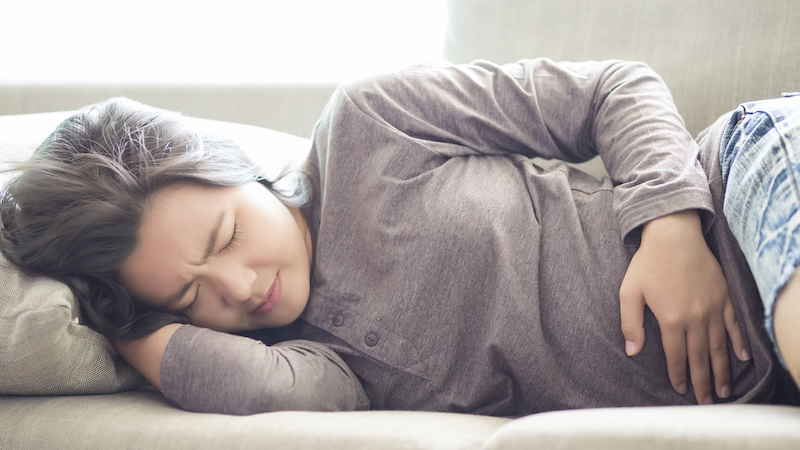
Pain with menstruation, or dysmenorrhea, is experienced by more than half of women for at least 1 to 2 days each month. Other symptoms can include diarrhea, nausea, vomiting, headache, and dizziness.
What causes period cramps?
There are two types of dysmenorrhea:
Primary dysmenorrhea is caused by an increased release of prostaglandins from the lining of the uterus, causing the muscles and blood vessels of the uterus to contract. The level of prostaglandins is usually high on the first day of a period, but decreases throughout the week, which is why pain lessens after the first few days.
Secondary dysmenorrhea is caused by a disorder in the reproductive organs, such as endometriosis, fibroids, or adenomyosis. This pain often lasts longer than normal menstrual cramps, such that it can begin a few days before a period starts or continue after a period ends.
What can I do about period cramps?
First, speak with a provider about your menstrual pain. It is important to distinguish if it is primary or secondary dysmenorrhea as the treatments can be different.
For primary dysmenorrhea, there are a number of at-home remedies to try:
- Take NSAIDs (non-steroidal anti-inflammatory drugs) to reduce prostaglandins and lessen their effects. Examples include ibuprofen or naproxen. It is recommended to take these for 1-2 days at the beginning of a period.
- Start a hormonal birth control method, such as the pill, the patch, the vaginal ring, or the progesterone IUD.
- Exercise often. Walking, jogging, biking, and swimming can help produce chemicals to block the pain.
- Apply heat. Try applying a heating pad or hot water bottle to your abdomen or try a hot bath.
- Relax. Yoga and meditation are great ways to overcome pain.
- Essential oils, including lavender, sage, rose, cinnamon, or clove, can help reduce pain.
- Avoid certain foods, such as caffeine, alcohol, salty, or high-fat foods. Focus on eating green leafy vegetables, nuts, or fish to obtain adequate nutrients and vitamins.
- Obtain good sleep prior to the start of a period.
All information is provided by:





